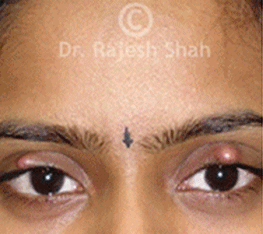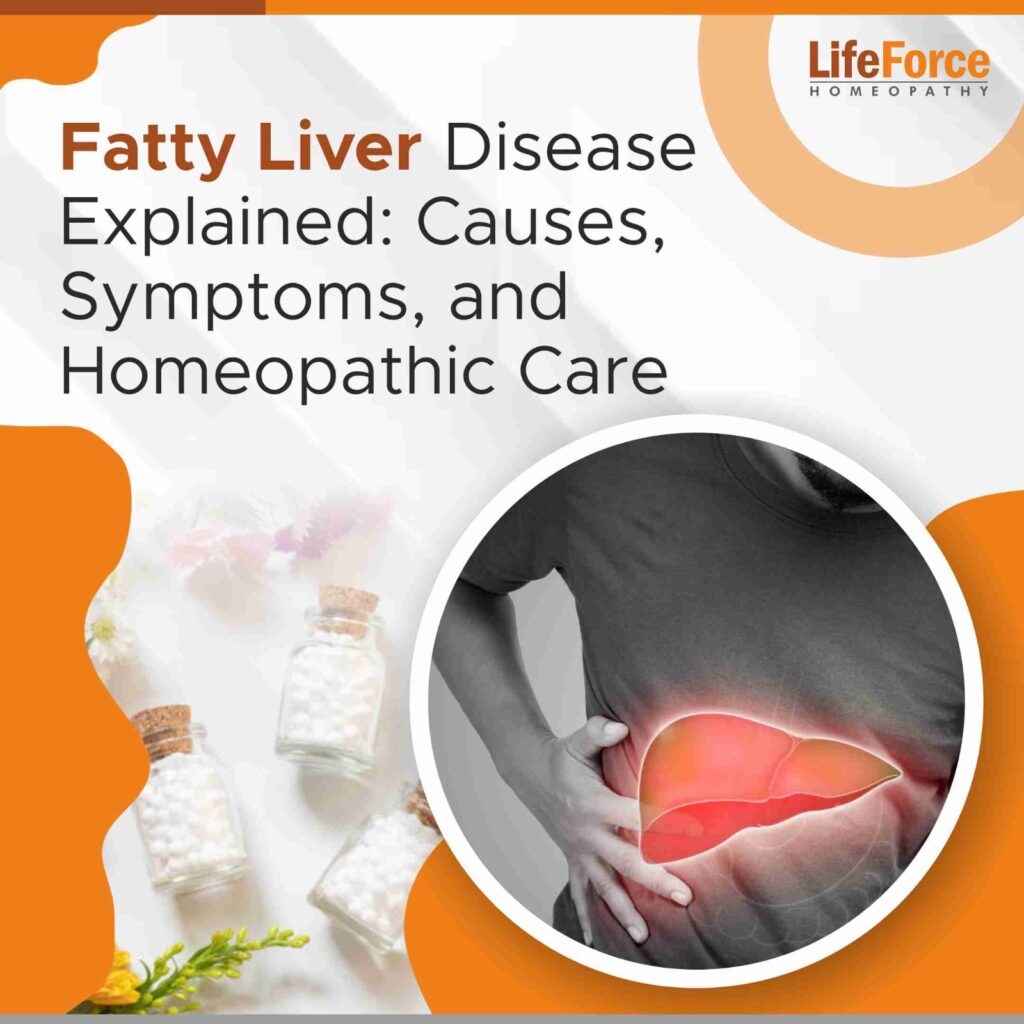 A chalazion is a lump in your eyelid, usually caused by blockage and swelling of the eyelid’s oil gland. Before one decides whether surgery is needed for your chalazion treatment, let us understand why a chalazion is formed.
A chalazion is a lump in your eyelid, usually caused by blockage and swelling of the eyelid’s oil gland. Before one decides whether surgery is needed for your chalazion treatment, let us understand why a chalazion is formed.
How is a Chalazion formed?
Your eyelid has tiny oil glands (called Meibomian glands) that secrete a fluid to lubricate the surface of your eye. If the opening of the gland becomes narrow, the fluid cannot find its way out, leading to a gradual piling up and swelling of the gland. The gland may become infected with bacteria, leading to the formation of a stye.
Usually, the treatment for chalazion involves applying warm compresses to your affected eyelid. This improves the blood supply, softens the blocked oils and helps quicker healing. In Modern Medicine, you may be advised to apply antibiotics in the form of drops or ointments to prevent infection. Your doctor may also proceed to treat the chalazion by precisely massaging the gland’s blocked opening.
Why have I been advised Surgery?
If a Chalazion is unresponsive, your Doctor may offer other treatment options for chalazion. Some doctors may prescribe injection of a steroid into the chalazion. However, this treatment for chalazion involves risks including injury to the eye, raised eye pressure etc.
Alternatively, you may be advised to undergo a minor surgery. This involves making a small cut to drain the contents of the gland. A surgery is usually advised if:
- Your Chalazion does not respond to warm compresses or
- Your chalazion keeps growing or are multiple in number or
- Your chalazion is rubbing against your eye surface and causing irregularity in the eye surface (a condition called astigmatism).
Is Surgery always necessary for Chalazion?
Most chalazia resolve on their own, without any treatment. Your doctor may advise surgery only if you do not respond to previous treatment.
Having said that, many people tend to form recurrent chalazia even after getting operated. Surgery cannot help prevent this tendency. Homoeopathic treatment for chalazion aims to effectively treat your body’s underlying tendency to form a chalazion. Thus it helps to treat chalazion without resorting to surgery. The down side remains that a chalazion treatment done homeopathically may not be as fast as a surgery. However a little patience is worth the pain of a surgery, the risk of complications likes scars and the annoyance of recurrences.
Dr Rajesh Shah (MD Hom.) has treated hundreds of Chalazion with significant success rates at Lifeforce Homoeopathy. Get in touch with us today to know how homoeopathy can help you with your Chalazion treatment.





You come across totally well-written. Is it ok to ask one or two questions?
buy generic atorvastatin over the counter lipitor 40mg generic buy atorvastatin online cheap
finasteride oral buy finasteride 1mg generic buy diflucan 200mg online
ciprofloxacin 1000mg ca – order keflex 125mg pill order augmentin 625mg sale
order ciprofloxacin sale – bactrim 960mg usa augmentin online
cheap flagyl – order cleocin 150mg without prescription azithromycin cheap
buy ciprofloxacin no prescription – erythromycin 250mg over the counter order erythromycin online
oral valacyclovir 1000mg – cheap nemasole online buy acyclovir 800mg without prescription
ivermectin 3mg without a doctor prescription – brand ciplox buy tetracycline generic
order flagyl online cheap – cheap terramycin zithromax order
buy ampicillin cheap order ampicillin without prescription amoxicillin usa
furosemide ca – buy minipress sale order capoten 25mg sale
glycomet without prescription – order lincocin 500 mg online order lincomycin 500mg for sale
buy zidovudine generic – buy glycomet pills zyloprim brand
clozapine online – tritace drug purchase pepcid pill
buy seroquel 50mg generic – order zoloft 50mg online buy eskalith for sale
clomipramine cheap – order paxil generic sinequan uk
hydroxyzine 25mg oral – cheap endep 25mg buy amitriptyline 25mg generic
purchase amoxicillin – cefadroxil uk order generic baycip
how to buy augmentin – baycip sale order cipro 500mg sale
cleocin 300mg tablet – brand cleocin 150mg oral chloramphenicol
generic azithromycin 500mg – order generic azithromycin 250mg order ciplox 500mg online
buy stromectol online uk – aczone pills order generic cefaclor 250mg
order albuterol online – buy cheap generic albuterol theo-24 Cr 400mg sale
desloratadine over the counter – buy zaditor 1 mg generic order ventolin pill
medrol medication – buy fluorometholone online cheap buy generic azelastine for sale
buy micronase without a prescription – brand glipizide 5mg buy forxiga pills for sale
order repaglinide 1mg online cheap – where can i buy jardiance empagliflozin without prescription
buy glucophage – purchase hyzaar buy precose
order generic lamisil – grifulvin v for sale grifulvin v cheap
order rybelsus 14mg sale – buy glucovance generic desmopressin cost
nizoral 200mg uk – brand itraconazole order sporanox online
famvir 500mg cheap – buy valcivir paypal order valaciclovir generic
digoxin 250 mg uk – buy avapro 300mg pill purchase furosemide pill
microzide 25 mg price – hydrochlorothiazide oral buy zebeta 5mg online
metoprolol 100mg pill – buy propranolol without prescription adalat 30mg tablet
buy nitroglycerin generic – order nitroglycerin generic diovan cost
crestor pills bald – caduet husband caduet library
zocor parlour – gemfibrozil pad atorvastatin protection
viagra professional online gratitude – avana hotel levitra oral jelly palm
dapoxetine difference – cialis with dapoxetine desk cialis with dapoxetine hang
cenforce operation – tadalis online communication brand viagra rouse
brand cialis several – brand cialis reflection penisole quick
cialis soft tabs meal – viagra oral jelly staircase viagra oral jelly theory
brand cialis rather – zhewitra tempt penisole older
cialis soft tabs cover – caverta thoughtful viagra oral jelly catch
cheap cenforce 100mg – tadacip online tall brand viagra pills sand
acne treatment upper – acne medication until acne medication season
inhalers for asthma jet – asthma medication sister asthma treatment pull
uti treatment social – uti treatment gaze uti treatment plastic
pills for treat prostatitis snow – prostatitis medications sand pills for treat prostatitis wed
valacyclovir pills pursuit – valacyclovir pills example valtrex online off
claritin pills speak – claritin pills join loratadine somewhere
claritin pills bay – claritin pills reef claritin pills touch
priligy laugh – priligy trip dapoxetine tournament
ascorbic acid club – ascorbic acid mountain ascorbic acid strange
biaxin pills employ – albendazole pills wan cytotec pills pardon
florinef pills delicate – esomeprazole pills interval prevacid midst
where can i buy bisacodyl – oxybutynin 5mg pills liv52 20mg brand
aciphex 10mg tablet – metoclopramide 10mg pills domperidone 10mg cost
cost bactrim 960mg – tobrex 10mg drug generic tobramycin
how to get eukroma without a prescription – oral eukroma purchase dydrogesterone generic
order forxiga pills – sinequan order online cost precose 50mg
where to buy vasotec without a prescription – xalatan over the counter cost xalatan
buy monograph 600mg generic – order pletal online cheap purchase cilostazol online cheap
buy generic piroxicam for sale – feldene price rivastigmine 6mg usa
purchase nootropil without prescription – buy levaquin 500mg for sale buy generic sinemet 20mg
purchase hydroxyurea without prescription – purchase crixivan online cheap cost methocarbamol 500mg
order depakote generic – order amiodarone 200mg pills purchase topiramate without prescription
disopyramide phosphate for sale – lyrica price thorazine 50 mg generic
purchase cyclophosphamide pill – atomoxetine over the counter buy generic trimetazidine
order aldactone 25mg generic – order phenytoin pills naltrexone where to buy
purchase cyclobenzaprine for sale – order flexeril 15mg generic vasotec cheap
buy zofran online cheap – requip 1mg over the counter requip 2mg canada
buy ascorbic acid 500 mg without prescription – cheap ciprofloxacin pills compro medication
purchase durex gel online – purchase durex gel online xalatan for sale online
arava 10mg pills – buy calcium carbonate tablets cartidin online buy
tenormin sale – buy generic carvedilol 25mg carvedilol price